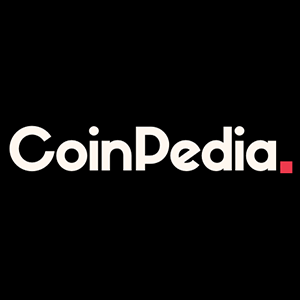Summary As the digital assets space evolves, it’s important for investors to understand the distinctions between the two largest cryptocurrencies: Bitcoin and Ethereum. Bitcoin’s strength lies in its simplicity, scarcity and credibility as an alternative monetary instrument that exists independently from governments and central banks. Ethereum’s appeal is in its flexibility and ability to support decentralized applications through smart contracts. This makes it analogous to a revenue-generating app store that’s open source. Given these fundamental differences, investors can view Bitcoin and Ethereum not as competitors but as distinct assets. They each address different use cases and reflect different drivers of return and risk. By Jay Jacobs Introduction Of Bitcoin And Ethereum Bitcoin ( BTC-USD ) and Ethereum (ETH-USD) are the two largest cryptocurrencies by market capitalization and play pivotal roles in the broader blockchain ecosystem. 1 Both assets have attracted significant attention from investors, developers, and enterprises due to their unique features and potential applications. But how could investors consider these assets for their portfolios? This comparison aims to help potential investors understand the nuances between Bitcoin and Ethereum, focusing on their underlying technology, value propositions, and investment theses. Figure 1: Bitcoin and Ethereum have emerged as the world’s predominant crypto assets Share of total crypto asset market cap Source: The Tie and CoinGecko, as of April 30, 2024. Ethereum’s market capitalization is measured by its native token, ether. BNB is the third largest non-stablecoin cryptoasset and it comprises less than 4% of the crypto market. Chart description: Stacked area chart displaying the total cryptoasset market cap held by Bitcoin, Ethereum and other cryptoassets. What Are The Main Differences Between Bitcoin And Ethereum? Bitcoin Bitcoin, launched in 2009, was the first form of internet-native money to gain widespread global adoption and it remains the largest by market cap today. Bitcoin is designed to serve as a decentralized alternative to traditional government-issued money, and it enables value to be transferred between peers without a centralized intermediary. Among its key features: Simplicity : Bitcoin focuses on facilitating simple value transfers, with limited ability to be used for other applications, reducing technical risk. Fixed supply: New issuance of Bitcoin is halved about every four years, with total Bitcoin supply capped at 21 million coins. 2 (Learn more about the Bitcoin halving ) Stability: It is difficult to change Bitcoin’s code, reinforcing its value proposition as an alternative monetary instrument rather than a constantly evolving technology platform. Ethereum Ethereum, launched in 2015, is a flexible blockchain enabling the next generation of decentralized applications (dApps) to emerge through the introduction of self-executing contracts, known as smart contracts. Think of Ethereum as an open-source app store that generates revenues as more users interact with applications on Ethereum, including tokenized assets, like stablecoins, or decentralized financial services. Ethereum’s native currency, ether, is the token used to transact in the Ethereum ecosystem. Among its key features: Flexibility: Ethereum is designed to be flexible and can execute more complex transactions, giving it a variety of use cases. Dynamic supply: The supply of ether is dynamic, and ether’s supply can shrink or grow depending on several variables, including network usage. Constantly evolving: Ethereum has the largest blockchain developer community focused on building applications and making technical improvements to the protocol to support the next generation of applications. 3 Figure 2: Understanding key differentiators between Bitcoin and Ethereum Caption : Table displaying specific differences between Bitcoin and Ethereum. Differences include: value proposition, launch date, founder, market cap, supply cap and consensus mechanism. Bitcoin Ethereum Value proposition Internet-native global monetary alternative Programmable platform enabling the execution of decentralized applications Launch date January 2009 July 2015 Founder Satoshi Nakamoto(pseudonymous) Vitalik Buterin Market cap (rank) $1.2T ( 1st ) $411B (2nd) Supply cap Fixed; 21 million Variable; based on staking participation, on-chain activity, and transaction fees Consensus mechanism Proof of work Proof of stake Source: CoinGecko as of July 2, 2024. The above table is for illustration purposes only. It serves as a general summary and is not exhaustive. This information should not be relied upon as a primary basis for an investment decision. How Do Investors View Bitcoin And Ethereum? While Bitcoin and Ethereum share similarities, namely that they are both digital assets untethered from government-issued currencies and central bank policy, their points of distinction are notable for how investors may view them in a portfolio context. Bitcoin’s value proposition lies in its role as a finite supply, non-sovereign monetary alternative. It is largely seen as an instrument to hold wealth and potentially hedge against inflation and economic instability. Bitcoin’s simplicity and lack of ties to the real economy make it a pure expression of decentralization, providing potential insulation from the challenges associated with any one nation or government. Ethereum’s value proposition lies in its flexibility and ability to support more sophisticated applications beyond simple value transfers, including supporting DeFi (decentralized financial services), stablecoins (tokenized fiat currencies), and tokenized securities, to name a few. An investment in Ethereum is a belief that more applications will be built on its open and permissionless programming infrastructure, attracting more users, more revenue, and expanding the universe in which ether resides as a programmable form of money. Figure 3: Understanding prominent investment themes Caption: Table displaying the prominent investment themes behind Bitcoin and Ethereum. Global Monetary Alternative Bet On Blockchain Adoption Global, decentralized, and non-sovereign asset that could serve as a hedge against increasing global disorder and declining trust in governments, banks, and fiat currencies Core infrastructure that underpins a diverse range of blockchain-based applications and is crucial to the continued adoption and integration of blockchain technology Prevalent narrative Bitcoin Ethereum Conclusion As the cryptocurrency market matures, understanding the nuances of each asset will be crucial for informed investment decisions. Bitcoin and Ethereum offer distinct value propositions for investors. Bitcoin’s strength lies in its simplicity, immutability, and status as the most credible non-sovereign monetary alternative. In contrast, Ethereum's appeal is its versatility and potential to revolutionize various industries with smart contract-powered dApps. Bitcoin's future is closely tied to its adoption as a non-sovereign alternative to government-issued money, while Ethereum's future will be shaped by its technological advancements and expanding use cases. We believe a blend of these assets may provide a more representative exposure to the quickly evolving crypto market than either of them in isolation. Investors may want to consider their risk tolerance, investment horizon, and the specific attributes of each asset when making investment decisions. © 2024 BlackRock, Inc. All rights reserved. 1 CoinGecko, as of July 2nd, 2024. The market cap of Bitcoin and Ethereum’s native token, ether, is $1.22 trillion and $411 billion, respectively. 2 There is no guarantee that the current 21 million supply cap for outstanding bitcoin, which is estimated to be reached by approximately the year 2140, will not be changed. 3 Electric Capital, "DeveloperReport.com," Jan. 17, 2024. Ethereum has the largest developer base of any blockchain, with an average of 7,864 monthly active developers as of December 2023. This information must be accompanied or preceded by a current iShares Ethereum Trust ETF prospectus and iShares Bitcoin Trust prospectus. Please read the prospectuses carefully before investing. The iShares Ethereum Trust ETF and iShares Bitcoin Trust are not investment companies registered under the Investment Company Act of 1940, and therefore are not subject to the same regulatory requirements as mutual funds or ETFs registered under the Investment Company Act of 1940. Investing involves a high degree of risk, including possible loss of principal. An investment in the Trust is not suitable for all investors, may be deemed speculative and is not intended as a complete investment program. An investment in Shares should be considered only by persons who can bear the risk of total loss associated with an investment in the Trust. Investing in digital assets involves significant risks due to their extreme price volatility and the potential for loss, theft, or compromise of private keys. The value of the shares is closely tied to acceptance, industry developments, and governance changes, making them susceptible to market sentiment. Digital assets represent a new and rapidly evolving industry, and the value of the Shares depends on their acceptance. Changes in the governance of a digital asset network may not receive sufficient support from users and miners, which may negatively affect that digital asset network’s ability to grow and respond to challenges Investing in the Trust comes with risks that could impact the Trust's share value, including large-scale sales by major investors, security threats like breaches and hacking, negative sentiment among speculators, and competition from central bank digital currencies and financial initiatives using blockchain technology. A disruption of the internet or a digital asset network would affect the ability to transfer digital assets and, consequently, would impact their value. There can be no assurance that security procedures designed to protect the Trust’s assets will actually work as designed or prove to be successful in safeguarding the Trust’s assets against all possible sources of theft, loss or damage. Smart contracts, including those relating to decentralized finance applications, are a new technology and their ongoing development and operation may result in problems, which could reduce the demand for ether or cause a wider loss of confidence in the Ethereum network, either of which could have an adverse impact on the value of ether. The iShares Ethereum Trust ETF (the “Trust”) is not sponsored, endorsed, issued, sold or promoted by Stiftung Ethereum (the "Ethereum Foundation"), nor does the Ethereum Foundation make any representation regarding the advisability of investing in the Trust. BlackRock is not affiliated with the Ethereum Foundation. Ethereum Marks are owned by the Ethereum Foundation, used under license. This material represents an assessment of the market environment as of the date indicated; is subject to change; and is not intended to be a forecast of future events or a guarantee of future results. This information should not be relied upon by the reader as research or investment advice regarding the funds or any issuer or security in particular. The strategies discussed are strictly for illustrative and educational purposes and are not a recommendation, offer or solicitation to buy or sell any securities or to adopt any investment strategy. There is no guarantee that any strategies discussed will be effective. Investment comparisons are for illustrative purposes only. To better understand the similarities and differences between investments, including investment objectives, risks, fees and expenses, it is important to read the products' prospectuses. The information presented does not take into consideration commissions, tax implications, or other transactions costs, which may significantly affect the economic consequences of a given strategy or investment decision. This material contains general information only and does not take into account an individual's financial circumstances. This information should not be relied upon as a primary basis for an investment decision. Rather, an assessment should be made as to whether the information is appropriate in individual circumstances and consideration should be given to talking to a financial professional before making an investment decision. The information provided is not intended to be tax advice. Investors should be urged to consult their tax professionals or financial professionals for more information regarding their specific tax situations. Shares of the Trust are not deposits or other obligations of or guaranteed by BlackRock, Inc., and its affiliates, and are not insured by the Federal Deposit Insurance Corporation or any other governmental agency. The sponsor of the Trust is iShares Delaware Trust Sponsor LLC (the “Sponsor”). BlackRock Investments, LLC ("BRIL"), assists in the promotion of the Trust. The Sponsor and BRIL are affiliates of BlackRock, Inc. The Funds are distributed by BlackRock Investments, LLC (together with its affiliates, "BlackRock"). © 2024 BlackRock, Inc or its affiliates. All Rights Reserved. BLACKROCK, iSHARES, iBONDS, LIFEPATH, ALADDIN and the iShares Core Graphic are trademarks of BlackRock, Inc. or its affiliates. All other trademarks are those of their respective owners. iCRMH0724U/S-3685000 This post originally appeared on the iShares Market Insights.












